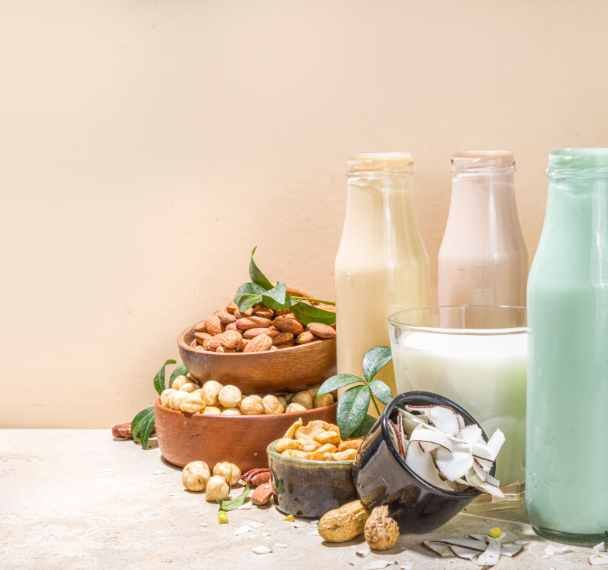Beyond the Bar: 5 Eye-Opening Facts About Cacao and Chocolate flavours
May 04, 2023
Introduction
Chocolate is everywhere - from global suppliers to convenience stores. However not all chocolate is created equal.
Have you ever tasted a piece of chocolate that was bursting with flavours and complexity, or one that had an off-flavour or strange aftertaste? In this blog post, we'll explore 5 surprising facts about cacao and chocolate flavours including the differences between fine chocolate and mass market chocolate, how these differences influence taste and quality, and explore the reasons behind the diverse flavour profiles of chocolate.
Fact 1: Cacao and chocolate are like sponges
Cocoa beans and chocolate are highly absorbent, taking in surrounding aromas. This makes them vulnerable to contamination from various sources:
Contamination risks
To maintain optimal flavour, both cacao and chocolate should be stored away from strongly scented products and chemicals throughout the entire process. Common contaminants include packaging scents (e.g. plastic, cardboard, paper), mustiness, cleaning chemicals and spices.
Roadside drying
A very common issue is the absorption of petrol fumes if cacao are dried by the roadside.
Smoke drying
During rainy seasons or when electricity is unavailable or too costly, some cacao farmers resort to smoke-drying their beans. This process can lead to contamination from the smoke itself and materials used as fuel, such as plastic. For chocolate production, ashtray-like notes are considered a defect, as they overpower the chocolate. While some companies like Solkiki offer smoked chocolate products, the smoke should never dominate the taste.
Shipping and storage
Proper storage is crucial for maintaining chocolate's quality. If a bar has been opened, it can be re-wrapped in aluminium foil or placed in a zip-seal bag. Even unopened bars with paper wrappers may benefit from re-wrapping to prevent contamination.
Fact 2: Fine chocolate vs mass-market chocolate

Fine/craft chocolate
Fine, bean-to-bar, or craft chocolate refers to chocolate produced by makers who emphasise cacao quality and unique flavours. Craft chocolate makers range from micro-batch (2kg-80kg) to medium/large producers (tonnes, half-tonnes).
Although there is no clear definition of what "fine" chocolate is, it must meet specific criteria and flavours to be considered as such: The International Institute of Chocolate and Cacao Tasting (IICCT) defines "fine" chocolate as complex, balanced, with distinctive in flavour notes, and no defects (e.g bitterness, high tannins,off-notes like mould, plastic or petrol). It should also not have burnt notes from over-roasting. A good flavour length with a clean aftertaste and a mouthfeel that is not fatty or waxy, is also important.
To achieve this, high-quality cacao are used, sourced sustainably, and processed with care to maintain the true flavour of the bean. Fine chocolate aims to showcase the natural flavours of the cacao bean, rather than mask or change them by over-roasting or adding ingredients like mass-market chocolate.
Fine chocolate Ingredients:
🔸Cocoa mass should be the first ingredient on the ingredients list.
🔸>60% of cocoa solids for dark choc
🔸>30% cocoa solids for milk.
🔸No added ingredients other than:
- Extra cocoa butter
- Sugar
- Milk
- Lecithin
- Real vanilla pods or extract (no “vanillin” or “vanilla flavour”)
- No artificial flavourings or preservatives
Mass-market chocolate
Chocolate production on a large scale is dominated by industrial chocolate makers who use a long list of ingredients, among chemicals, preservatives, and artificial flavours. These companies rarely live up to their marketing promises, and their chocolate is usually generic, made by one of the few large-scale chocolate makers that produce the majority of the chocolate consumed worldwide.
"Premium" chocolate brands are still industrial and mass-produced, with a focus on the percentage of cocoa rather than the origin or quality of the cocoa. Even fair trade or organic chocolate from these companies is still industrial and lacks the complexity and nuances of true fine chocolate.
Most of the world's cacao is used for confectionery and candy, which typically contain only a small amount of actual chocolate and are made from low-quality bulk cacao from Asia and West-Africa that has not been fermented, dried, or stored properly.
Industrial chocolate makers start with cacao in any shape, form, variety, and process and use processing techniques to achieve standardised quality from variable quality commodity cacao. The flavour profile of industrial chocolate comes more from processing than the native cacao flavour, with a focus on achieving a smooth and creamy mouthfeel rather than a complex and nuanced flavour.
Fact 3: Anticipated flavours when eating a great chocolate

Chocolate flavours can be categorised into five groups with each distinct notes and characteristics:
Herbal/Spicy
Includes notes of cinnamon, clove, dried leaves, jasmine, geranium, and honey. Commonly found in complex Trinitario, Nacional, or Peruvian Upper Amazon cacao varieties and used in traditional fine chocolate.
Fruity
Features notes of citrus, melon, cherry, raspberry, strawberry, cranberry, plum, tomato, and tropical fruits. Trinitario cacao varieties from locations such as Madagascar and lower roast Peruvians are known for their tropical fruit notes and are used in fine chocolate.
Vegetal
Encompasses walnut, hazelnut, almond, olives, woody, coconut, and grassy notes along with dairy flavours. Typical West African bulk Amelonado cacao has woody, coconutty, earthy, and almondy notes and is known for its harsh sour aftertaste and lack of complexity. This cacao represents up to 90% of global production and most consumed chocolate. Real criollos used for fine chocolate have a grassy and vegetal profile while olive notes can be found in Central American cacao varieties.
Dark Sweet
Contains notes of cacao powder, coffee, molasses, rum, wine, raisin, prune, mulberry, and dark sugars. High roast Trinitarios and cacao from Jamaica, Grenada,and Trinidad are known for their typical Caribbean notes and are used in fine chocolate.
Pure Chocolate
Showcases pure flavours at their finest in white-beaned criollos such as Venezuelan Porcelana. Fine chocolate made with criollos is characterised by delicate yet complex flavours with chocolatey, slightly nutty and acidic notes along with hints of honey and leather or black olives for Central American varieties.
An essential aspect to consider is the cacao variety, genetic and terroir. If the cacao is not selected for its flavour potential and complexity, it will result in poor-quality chocolate, as is the case with most chocolate consumed. Without high-quality cacao as a foundation, it's impossible to create good chocolate.
In the previous blog series we explored how origin and terroir have an impact on the chocolate flavour profile and the influence of cacao variety and genetic on the chocolate flavour profile.
Fact 4: Undesirable flavours one may encounter when consuming low-quality chocolate
A chocolate's flavour profile cannot be solely defined by its positive attributes, as issues or flaws can significantly impact the sensory experience. To present a comprehensive picture, it is necessary to consider common cacao and chocolate flavour defects. These defects can be categorised into four groups with distinct notes and characteristics:
Chemical
This group includes notes like petrol, rubber, plastic, carbon, ash, smoke, medicinal, sulphurous, biscuity, and nutty skins. These flavours often result from drying issues in cacao processing like roadside or smoke drying (as mentioned in Fact 1), and they frequently appear when over-roasting cacao prior to chocolate making. Over-roasting results in burnt toast, ash notes and an overall loss of flavours such as acidity, floral or fruity notes. Similarly, over-refining or conching chocolate can produce biscuit and cardboard notes that flatten the flavour.
Mineral
This group consists of cardboard, dust, dirt, metallic, plaster, and mouldy notes. These flavours usually occur when cacao is under-fermented, thereby increasing bitterness and tannic elements in chocolate. Under-fermentation prevents the full flavour potential of cacao from developing properly. Additionally, improperly dried cacao can produce mould and distinct musty or fungal notes in chocolate.
Animal
This group includes bouillon, yeast extract, hammy, dried meat, overcooked meat, and leather notes. These flavours typically result from over-fermentation of cacao.
Bacterial
This group includes cheesy, vomit-like, acetic, faecal, compost-like smells as well as sweaty aromas and rotting fruit notes. These flavours typically result from over-fermentation of cacao.
Fact 5: Mistake to avoid when buying chocolate
Ingredients list
While ingredients won't reveal the chocolate's taste, it's an essential first step. Refer to the definition of fine chocolate in Fact 2 and check for any non-qualifying ingredients. High-quality chocolate doesn't require them.
Take note of the cocoa butter percentage. Different cacao varieties and harvests contain naturally varying amounts of cocoa butter, so adding some may be suitable in certain cases. Cocoa butter enhances the chocolate's melting, tempering, and fluidity when used by chocolatiers and chefs, resulting in a smoother texture. Insufficient cocoa butter leads to a dry mouthfeel, while excessive amounts result in an unpleasant fatty, waxy texture, a lack of flavour, and a cooling effect. Poor quality or oxidised cocoa butter negatively impacts flavour.
Lecithin serves a similar purpose to cocoa butter but at a lower cost. It helps chocolate flow and melt more easily. Some producers use SSO or rapeseed lecithin instead of soy.
Cocoa powder is occasionally added; however, it is typically made from low-quality bulk cacao, which often results in inferior taste.
Vanilla has traditionally been used to enhance flavour, sweetness, and creaminess; however, overuse can be overpowering. If utilised, quality matters: whole vanilla pods or extracts are recommended over substitutes like "natural vanilla flavour" or "vanillin," which is not considered as a fine chocolate. Vanilla usage usually implies lower chocolate quality or attempts to mask cacao defects such as mould.
If sugar is the primary ingredient, expect a low-quality chocolate with low-percentage cacao solids and excessive sweetness.
Avoid chocolates with other cheap additives such as vegetable fat or artificial flavourings. Products containing these are not considered fine chocolate and will likely have poor quality.
Cacao % and single origin cacao
Be cautious with marketing claims such as cacao % and single origin: Almost every premium chocolate brand aims to convince you that their product is the most authentic, luxurious chocolate available, made from specially sourced cacao. However, many of these chocolate bars actually come from industrial producers.
The percentage of cacao in chocolate affects its bitterness, astringency, and acidity. Higher sugar content (lower cacao percentage) works better for bitter or astringent cacao. Similarly, higher sugar percentages suit more acidic cacao, which is why Madagascan or Peruvian-origin fine chocolate often contain around 63%-65% cacao. Milder varieties such as fine chocolate made with Venezuelan criollos perform better at higher percentages in the 70% - 80% range.
It was Michel Cluizel, a French fine chocolate maker, who first introduced high percentage bars in 1990, including the revolutionary 'Noir Infini', 99% dark chocolate bar made only with cacao and spices.
Bonnat, one of France's oldest chocolate companies, pioneered the single origin chocolate movement in 1900. Though it initially struggled, the idea regained traction in 1983. Today, Bonnat is a leading producer of single-origin chocolates with selections from Chuao, Ecuador, Maragnan, Sri Lanka, and Trinidad. They are among the few who maintain their quality over time.
Valrhona, another French fine chocolate maker, launched Valrhona's first origin 'Grand Cru' chocolate—Guanaja—in 1986 as a blend of 10 South American criollos. For many individuals, Valrhona's Grand Crus were their introduction to fine origin chocolate. Regrettably, the Grand Cru recipes have changed over time; for example, Guanaja no longer mentions criollo or South America on its packaging, arguably diluting the original vision.
The French fine chocolate movement in the '80s aimed to emphasise the origins and cacao percentage, preserving the delicate nuances of cacao flavours. This sparked the fine chocolate revolution, unveiling an entirely new world of cacao and chocolate.
Today, cacao percentage and origin are commonly used as marketing tools for consumers to choose their chocolate. However, these factors don't necessarily indicate the quality and flavours of the product.
When evaluating a chocolate bar's authenticity, it's important to ask whether the story on the label is believable, if a specific origin is mentioned, and if it sounds convincing. Phrases like "our Peruvian farmers" may appear genuine, but can sometimes be mere marketing ploys. The best way to navigate through marketing tactics is to research the chocolate maker and rely on the ultimate test - flavour. After all, good chocolate made from quality cacao is difficult to imitate!
Conclusion
In conclusion, chocolate is a versatile and delightful treat that can offer a diverse range of flavours and experiences. Throughout this exploration of cacao and chocolate, we've discovered the critical differences between fine and mass-market chocolate, the incredible flavour potential of high-quality chocolate, and the pitfalls to be aware of when selecting chocolate.
For food businesses, grasping these critical distinctions can enhance your appreciation for exceptional chocolate and guide you in making well-informed choices during selection. Expertise, care, and knowledge can elevate your chocolate offerings, resulting in truly unforgettable chocolate experiences.
Link to related blogs you may enjoy
🔶Uncovering The Flavours Of Chocolate Series | The Impact Of Cacao Variety & Genetic
🔶Uncovering The Flavours Of Chocolate Series | The Impact Of Cacao Origin & Terroir
🔶The Secret Of Cacao | First Steps Towards Chocolate: Harvest & Process
🔶Uncovering The Flavours Of Chocolate Series | The Impact Of Cacao Process
References
Level 2 Certificate in Chocolate tasting https://www.chocolatetastinginstitute.org/
Stephen T Beckett, The Science of Chocolate, 3rd Edition, 2018
Alistair Paterson, Mark Fowler, Angela Ryan , Flavor Formation and Character in Cocoa and Chocolate: A Critical Review, 2008 Critical Reviews In Food Science and Nutrition
Ana Clara Aprotosoaie, Simon Vlad Luca, and Anca Miron, Flavor Chemistry of Cocoa and Cocoa
Products—An Overview, Comprehensive Reviews in Food Science and Food Safety Vol. 15, 2016
Lídia J R Lima, M Helena Almeida, M.J. Robert Nout, Marcel Zwietering, Theobroma cacao L., "The Food of the Gods": Quality Determinants of Commercial Cocoa Beans, with Particular Reference to the Impact of Fermentation, 2011, Critical Reviews In Food Science and Nutrition
Additional resources to go further
Bob Holmes, Flavour: The science of our most neglected sense
Harold McGee, Nose Dive
Maricel E. Presilla, The New Taste of Chocolate
Bee Wilson, First bite - how we learn to eat
Sophie D Coe & Michael D Coe, The True History of Chocolate








